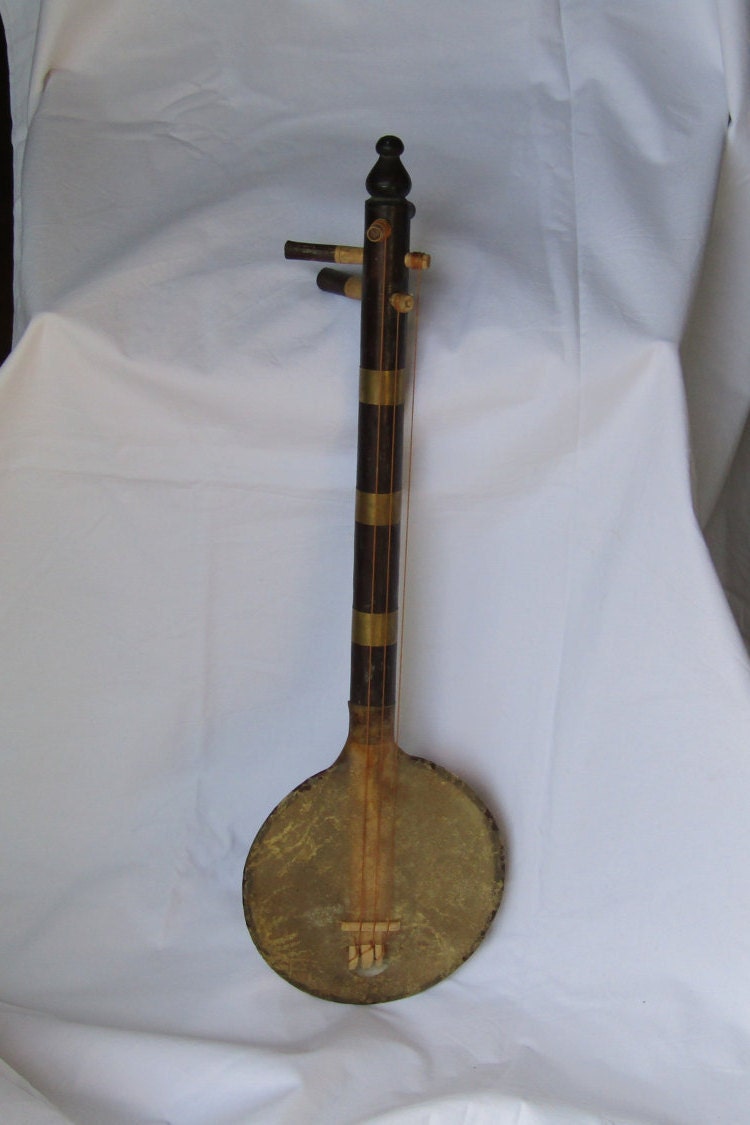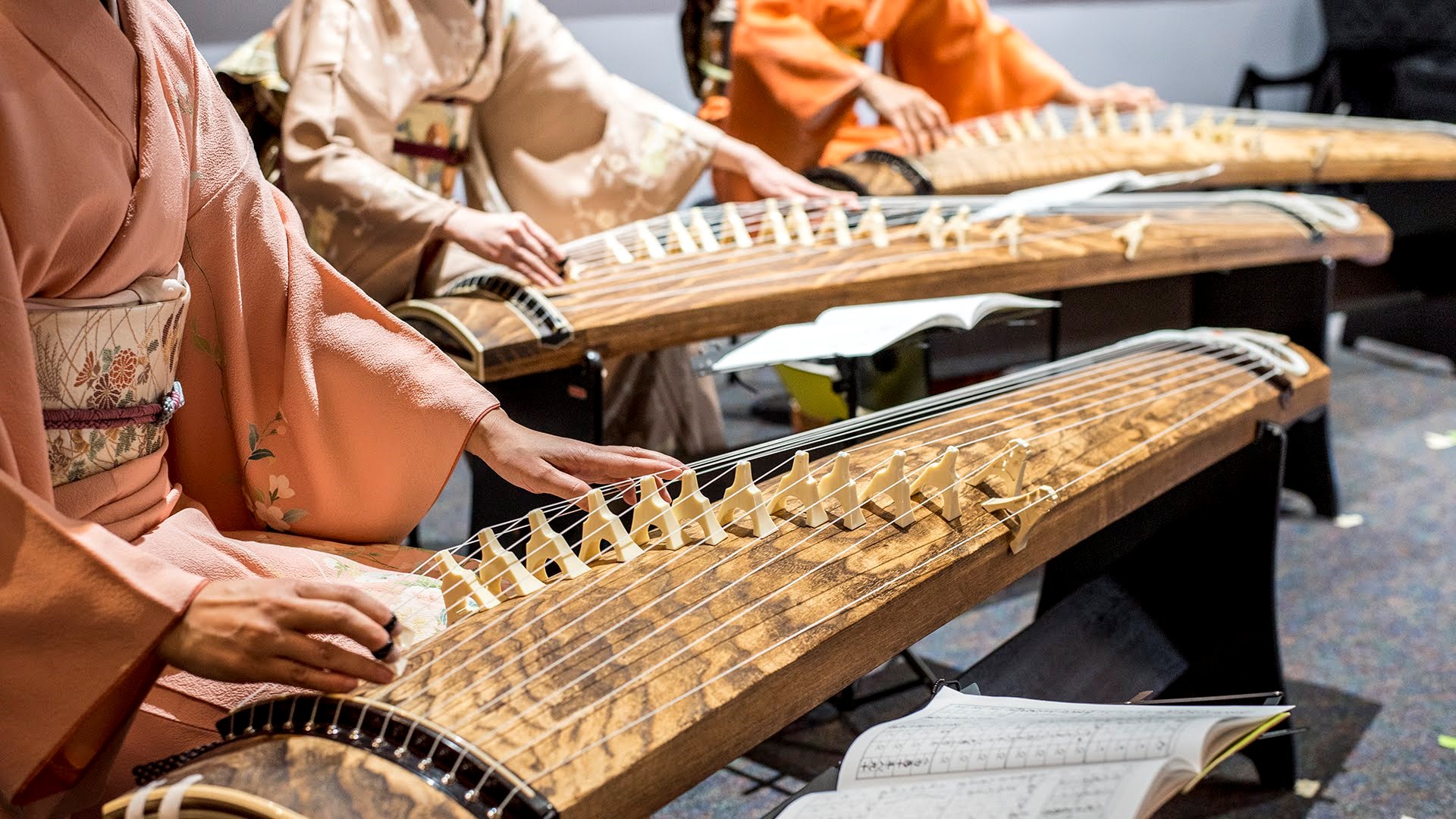

It’s a type of four- or five-stringed lute, and it’s been a fundamental feature in Japanese music and narrative storytelling since the 7th century CE. The biwa is a stringed instrument with a short neck and a rounded body. They’ve been used in military settings to inspire troops and communicate messages, in theater and performances to create ambiance or generate tension, and in local festivals and rituals to accompany dancers and spiritual ceremonies. There are many different types of taiko drums, from small handheld drums to huge floor drums played with large sticks called bachi. Shinto legend holds that the sun goddess Ameratsu sealed herself away in a cave in a fit of rage and was only lured out again when Ame-no-Uzume – a deity of joy, revelry, and the arts – danced upon an empty barrel of sake, The rhythm of her feet created a deep, soul-pounding beat that soothed the angry goddess and echoed to this day in the jubilant, powerful thrumming of the taiko. The drum has a mythological origin story as well. The first recorded use of taiko was in the 6th century CE when the drums were played in festivals and as a form of communication. Though the word taiko literally means “drum” in Japanese, it’s become the term for a specific family of barrel-shaped drums as well as the word describing a traditional drumming ensemble. Here are twelve of our favorite Japanese traditional instruments – some you’ll surely recognize and a few you may not have encountered before. With percussive, stringed, and wind instruments all represented, the spectrum of traditional Japanese instruments is varied, and the sounds they produce are colorful and unique. Today, they figure prominently in festivals, ceremonies, performances, and rituals. Historically, Japanese instruments have played an important role in court life, theater, and spiritual and religious events. Others, like the mukkuri, are little known outside their regions of origin. Some have enjoyed global recognition and fame, like the taiko and the shamisen. The timestamp is only as accurate as the clock in the camera, and it may be completely wrong.Famed for its lilting, plaintive vocals and evocative storytelling, traditional Japanese music also features a wide range of unique and beautiful instruments. If the file has been modified from its original state, some details such as the timestamp may not fully reflect those of the original file.
#Japanese stringed instrument software#
This file contains additional information such as Exif metadata which may have been added by the digital camera, scanner, or software program used to create or digitize it. However, the koto is important to Japanese art-music of recent origin.Īndrew Plumb from Ottawa, Ontario, Canada The typical stringed instruments used in Japanese music are the shamisen and the koto.

The three-stringed board zither is a smaller member of the family. Their main instruments is the Tonkori, a five-stringed zither. Their descendants now live on Hokkaido and on the Sachalin peninsula. The original inhabitants of Japan are the Ainu. Lutes and harps were introduced 2000 years afo under the collective name of p'ip'a. These half- tube zithers are still today the most important instruments in China.

In ancient times, the instruments used included aerophones, idiophones, and membranophones, and among the stringed instruments, relatives of our zithers.

String instruments of China & Japan, Deutsches Museum (121283520)Ĭhina looks back on a 4000 year tradition of musical instrument making and playing. Description String instruments of China and Japan, Deutsches Museum.jpg


 0 kommentar(er)
0 kommentar(er)
